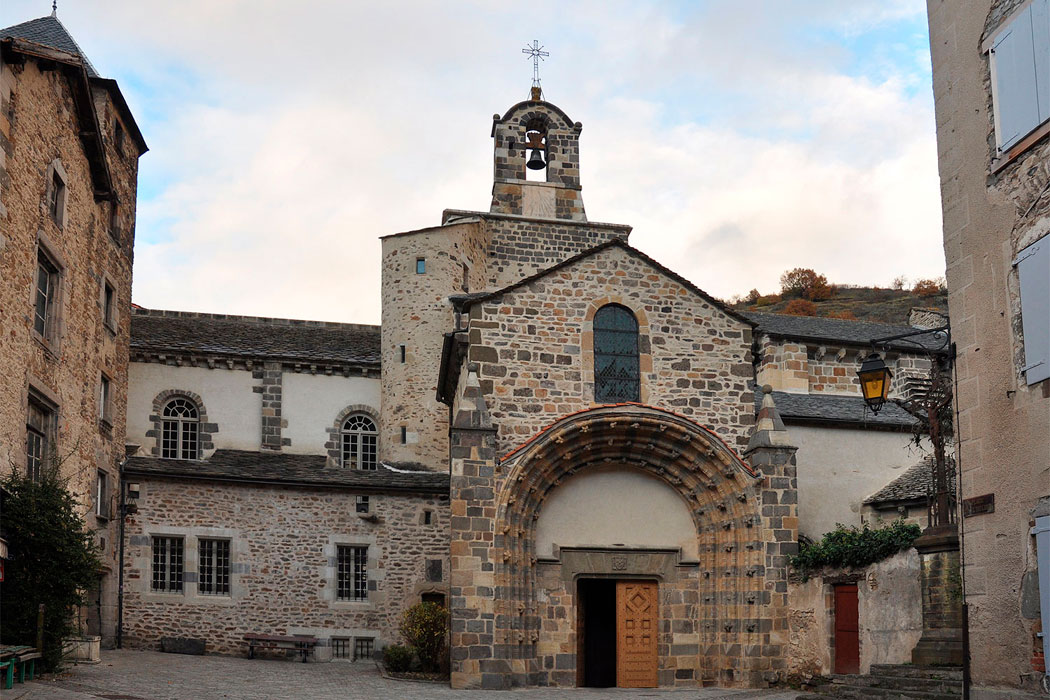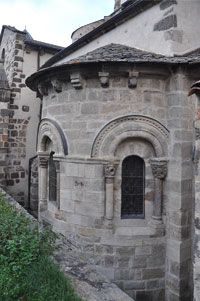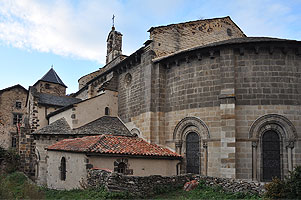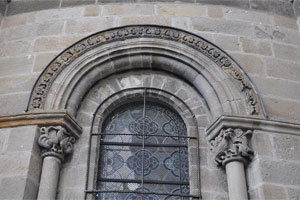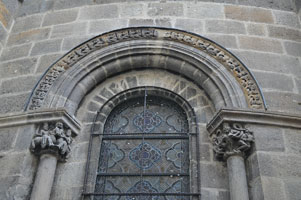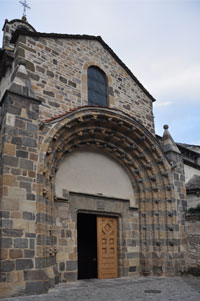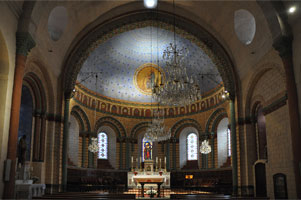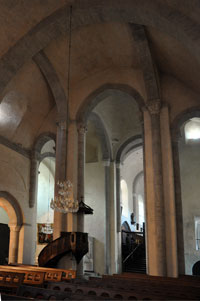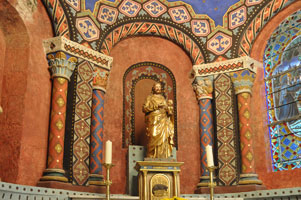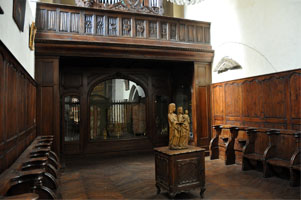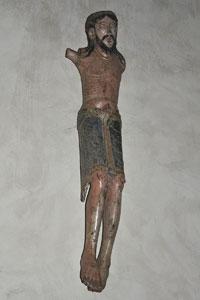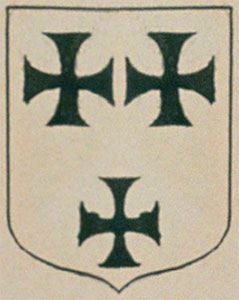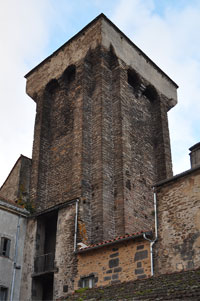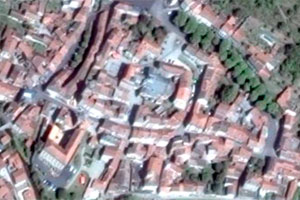Saint-Pierre de Blesle is a former Benedictine nunnery, founded in the second half of the 9th century by Ermengarde († 890), Countess of Auvergne, wife of Bernard Plantevelue († 886). Ermengarde and Bernard were the parents of William I of Aquitaine (c. 875-918), founder of several monastic houses, including the Abbey of Cluny (Saône-et-Loire).
The foundation of Blesle took place at an uncertain date between 849 and 885, probably around 865. Pope Sergius III (901-911) placed the monastery under the patronage of Saint Peter, while granting it the privilege of exemption, a benefit that was renewed several times by later pontiffs and lasted until its affiliation with Cluny. At the time of the foundation, the countess donated to the monastery the lands she owned in this place, including several churches and parishes that came under the direct authority of the nuns.
Tradition holds that Ermengarde retired to this monastery and even became its first abbess, although the historian Du Tems (1775) mentions Emilde as the first abbess, contemporary of the foundress. Ermengarde died in 890 and was buried in the church. The house enjoyed a long period of prosperity: the abbesses of Blesle exercised lordship, often clashing with the lords of Mercoeur, with whom they competed for power. The Mercoeur eventually established themselves in Blesle by erecting a fortress, despite the opposition of the Benedictine community, which was already losing influence.
Although the nuns initially lived communally, by the 14th century they had relaxed the rules and were allowed to maintain private houses or apartments, with their own servants. It should be noted that the community was composed exclusively of women from the nobility. At that time, the territory and the monastery suffered the effects of the Hundred Years’ War and the raids of mercenary armies. From 1530, the position of abbess became a royal appointment, and between 1628 and 1633 Saint-Pierre de Blesle was incorporated into Cluny, losing much of its independence and administrative capacity. In 1789, already in decline, it became the seat of a secular community of canonesses, ending the Benedictine tradition. This was all swept away by the Revolution.
Today, the church still stands, though it underwent numerous structural changes: it has a small nave and a long transept leading to an oversized chevet in proportion to the rest of the building. Some parts may date back to the monastery’s earliest period, perhaps the 10th century, though most of the fabric is later. It preserves interesting examples of sculpture, as well as furnishings. Around this church of Saint-Pierre, the private residences of the nuns can still be found, probably once built around a cloister, now vanished.
- ANÒNIM (s/d). Blesle. Visite dans son passé. Les Amis du Vieux Blesle
- BEAUNIER, Dom (1912). Abbayes et prieurés de l'ancienne France. Vol. 5. Bourges. Abbaye de Ligugé
- CRAPLET, Bernard (1972). Auvergne romane. La nuit des temps, 2. Zodiaque
- DU TEMS, Hugues (1775). Le clergé de France, vol. III. París: Brunet
- DUCAS, M. (1843). Les chapitres nobles de dames : recherches historiques, généalogiques et héraldiques sur les chanoinesses régulières et séculières. París
- FRAMOND, Martin de (2013). Notes sur l’histoire des Bénédictines de Saint-Pierre de Blesle (IX-XVII siècle). La place et le rôle des femmes dans l’histoire de Cluny. Brioude: Créer
- MATHIEU, Jean-Noël (2007). Recherches sur Ermengarde, mère de Guillaume le Pieux, duc d'Aquitaine. Revue belge de philologie et d'histoire, vol 85
- PHALIP, Bruno (2013). L’architecture de l’aabbatiale de Blesle et son environnement. La place et le rôle des femmes dans l’histoire de Cluny. Brioude: Créer
- SAINT-MAUR, Congregació de (1720). Gallia Christiana in provincias ecclesiasticas distributa. Vol. 2. París: Typographia Regia
- SAINT-PONCY, Léo de (1869). Notice historique sur Blesle et l'abbaye de Saint-Pierre-de-Blesle. Annales de la Société d'agriculture, sciences, arts et commerce du Puy. Vol. XXIX. Le Puy. Marchessou
